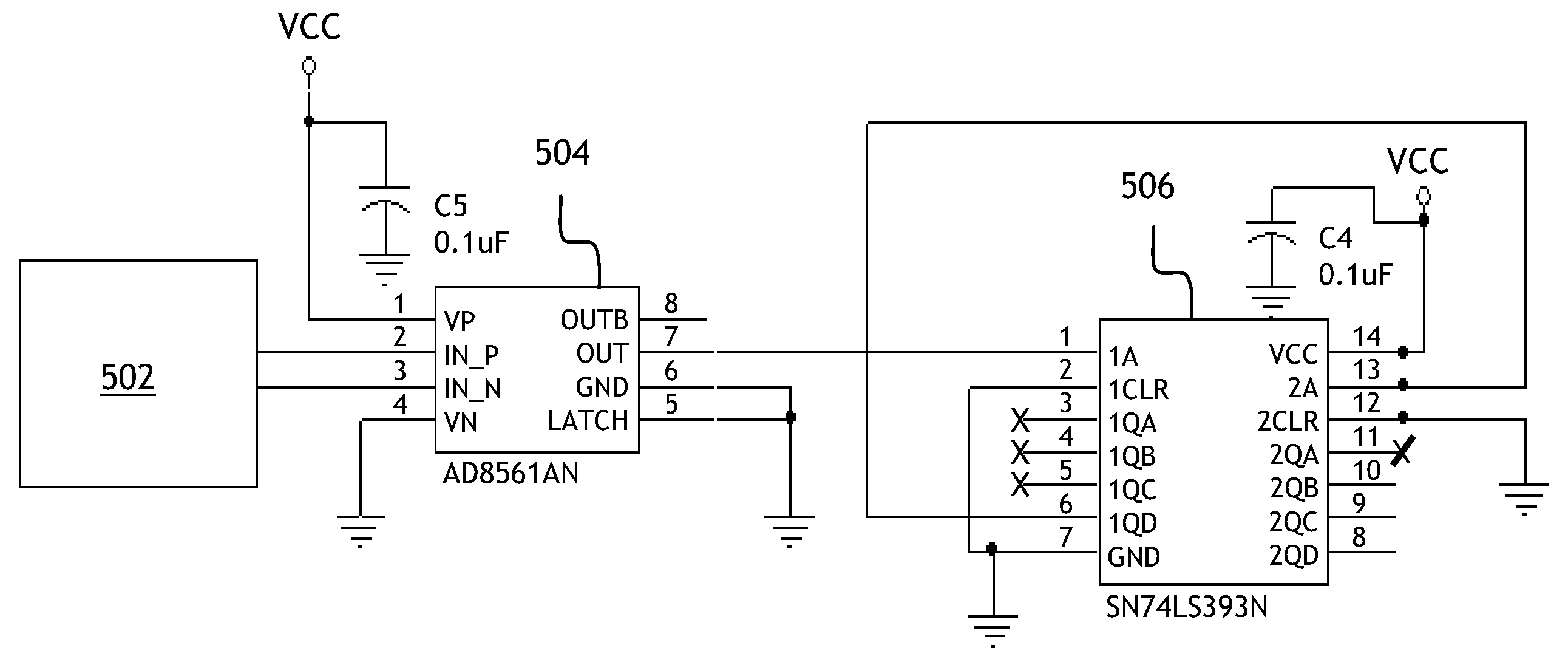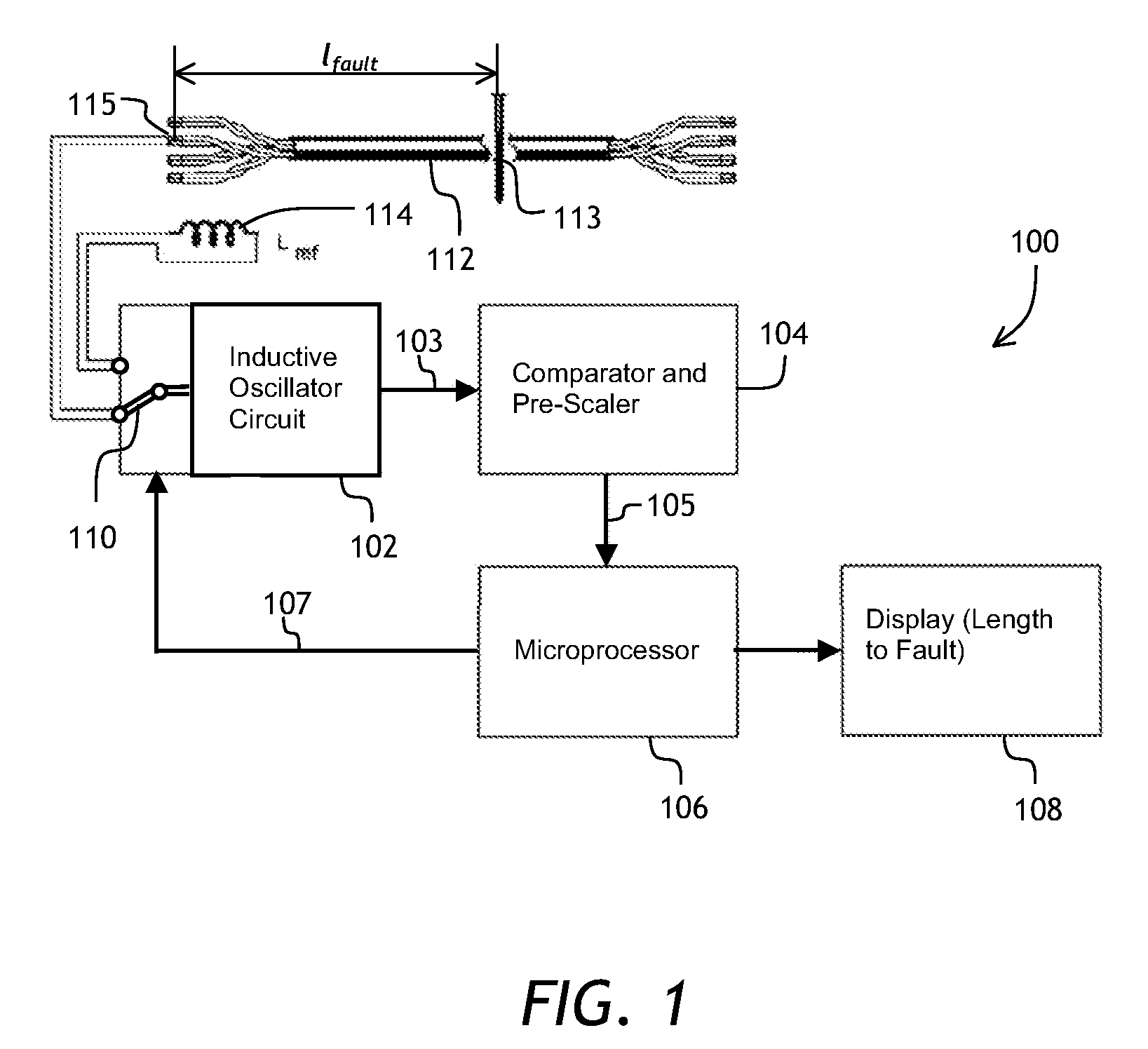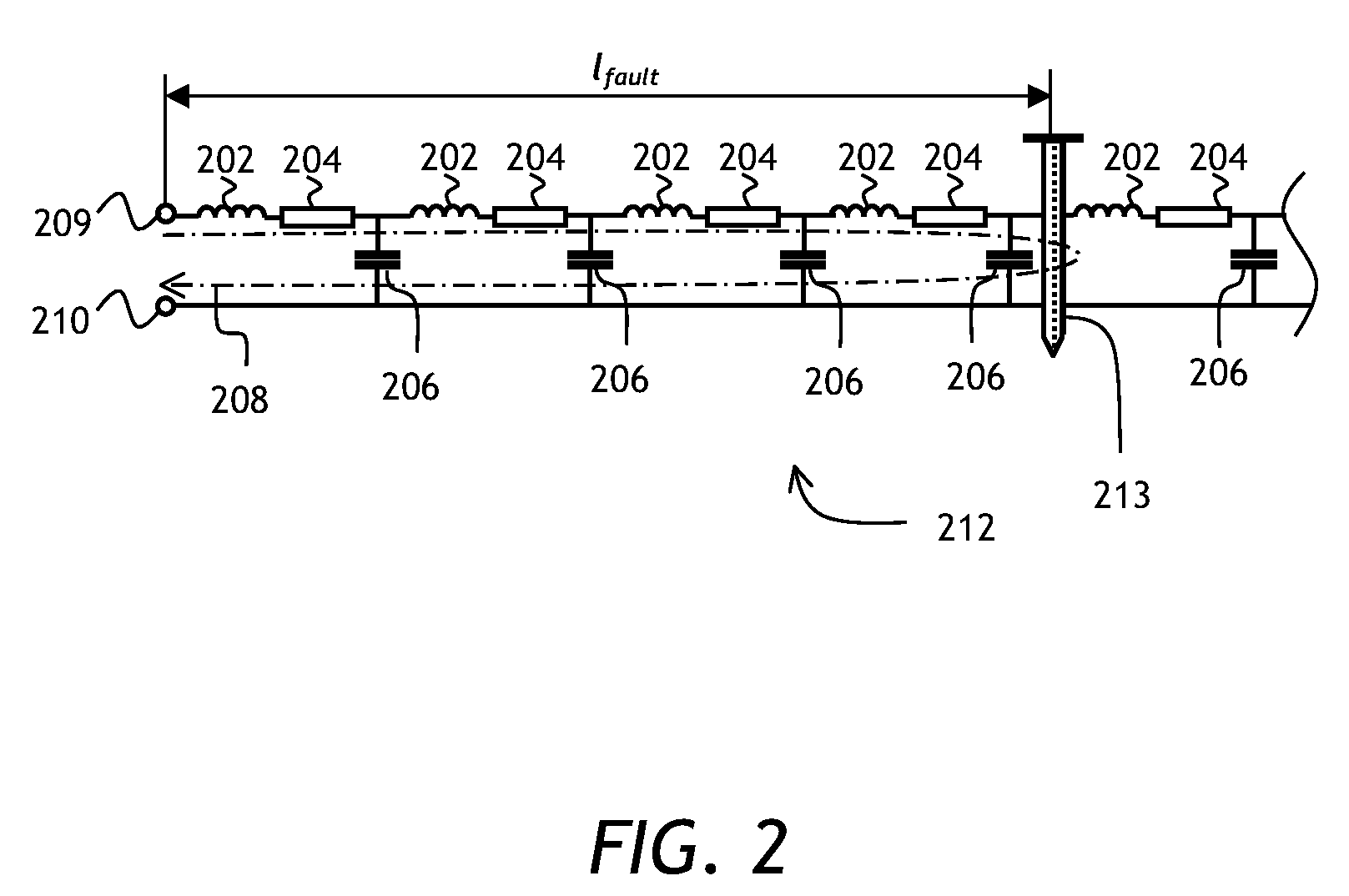Locating a low-resistance fault in an electrical cable
a low-resistance, fault-locating technology, applied in the direction of fault location by conductor type, measurement device, instruments, etc., can solve the problem of difficult to determine the location of a fault, the cable is run in a difficult-to-reach area, and the normal performance of the cable is disrupted. problem, to achieve the effect of locating the fault, it is difficult, if not impossible in some cases
- Summary
- Abstract
- Description
- Claims
- Application Information
AI Technical Summary
Benefits of technology
Problems solved by technology
Method used
Image
Examples
Embodiment Construction
[0029]While the present teachings are described in conjunction with various embodiments and examples, it is not intended that the present teachings be limited to such embodiments. On the contrary, the present teachings encompass various alternatives, modifications and equivalents, as will be appreciated by those of skill in the art.
[0030]Referring to FIG. 1, a block diagram of an inductance based length-to-a-fault meter 100 of the present invention is shown comprising an inductive oscillator circuit 102, a comparator and pre-scaler circuit 104, a microprocessor 106, and a display 108. A switch 110 is used to switch an input of the oscillator 102 between: (a) an inductive faulted cable under test, or test cable 112 having a local low-resistance fault 113 symbolically shown as a nail driven through the cable 112; and (b) a reference inductor 114 having a reference inductance value of Lref. The fault 113 is located at a distance lfault from a measurement point 115. Herein the term “low...
PUM
 Login to View More
Login to View More Abstract
Description
Claims
Application Information
 Login to View More
Login to View More - R&D
- Intellectual Property
- Life Sciences
- Materials
- Tech Scout
- Unparalleled Data Quality
- Higher Quality Content
- 60% Fewer Hallucinations
Browse by: Latest US Patents, China's latest patents, Technical Efficacy Thesaurus, Application Domain, Technology Topic, Popular Technical Reports.
© 2025 PatSnap. All rights reserved.Legal|Privacy policy|Modern Slavery Act Transparency Statement|Sitemap|About US| Contact US: help@patsnap.com



